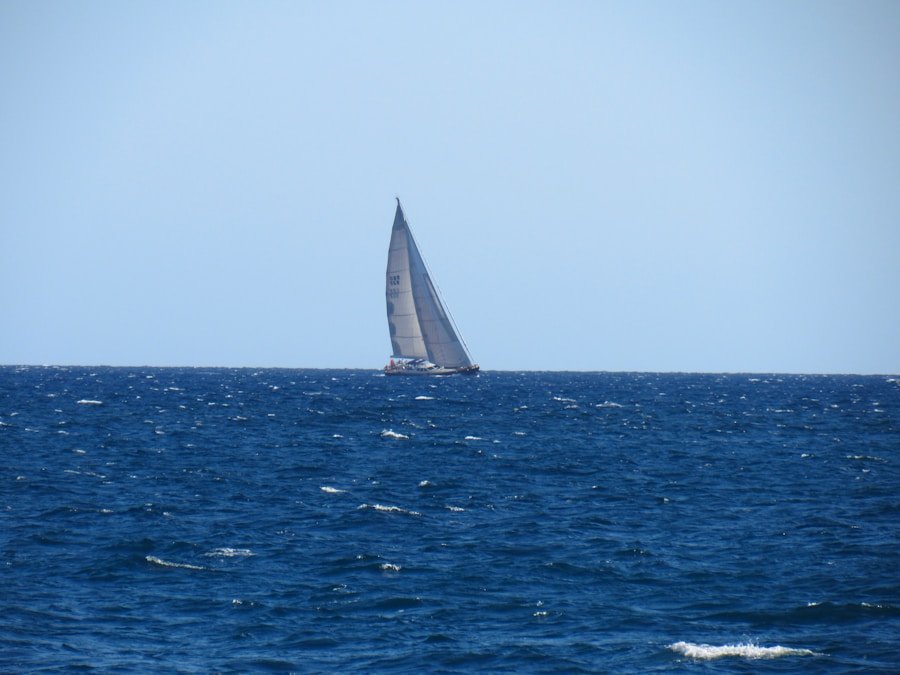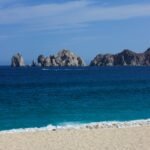A Trip Through History, Culture, & Nature Cabo de la Vela is a beautiful Colombian beach resort with a centuries-long history. The indigenous Wayuu people, who have lived in the area for many generations, once considered this to be a significant location. “Cabo de la Vela” means “Cape of the Sail,” a reference to its significance as a navigational point for traders and sailors in the past. An important turning point in the history of the area was the arrival of Spanish explorers in the 16th century, which resulted in conflicts and cultural exchanges that influenced the local environment. You will learn how Cabo de la Vela developed into an important center for trade and communication as you learn more about its past. Check out the latest Nevada Events at Nevada Events.
Key Takeaways
- Cabo de la Vela has a rich history as a sacred place for the indigenous Wayuu people, dating back centuries.
- The Wayuu people have a unique culture and traditions, including their colorful handwoven crafts and strong sense of community.
- The natural beauty of Cabo de la Vela is breathtaking, with its pristine beaches, crystal-clear waters, and stunning desert landscapes.
- Visitors can enjoy thrilling outdoor activities in Cabo de la Vela, such as kite surfing, windsurfing, and hiking in the surrounding hills.
- The cuisine of Cabo de la Vela is delicious and authentic, featuring fresh seafood, traditional Wayuu dishes, and tropical fruits.
The Wayuu, who are renowned for their adaptability and tenacity, were able to maintain their customs in spite of outside influences. Numerous historical events, such as colonial conflicts and the struggle for indigenous rights, have taken place in the region. Your experience is enhanced by knowing this history, which enables you to recognize the rich cultural fabric that currently characterizes Cabo de la Vela. Deciphering the Meaning of Mochilas.
You will come across their vibrant woven bags, called “mochilas,” as you travel through this area. These bags are not only exquisite, but they also have profound cultural meaning. Every design conveys a tale while showcasing the wearer’s heritage and identity. Investigating the Rich Cultural Heritage of the Wayuu.
You can learn about the craftsmanship & backstories of each piece by interacting with local artisans. Also, the Wayuu have a rich oral tradition that consists of songs, myths, and legends that have been passed down through the ages. Their deep connection to nature stems from their belief in coexisting peacefully with the natural world. taking part in the spiritual practices of the Wayuu. By taking part in regional celebrations or rituals, you can gain insight into their communal values and spiritual practices.
| Metrics | Value |
|---|---|
| Number of Visitors | Approximately 50,000 per year |
| Average Temperature | Around 28°C (82°F) |
| Beach Length | Approximately 2 kilometers |
| Local Population | Around 2,000 inhabitants |
| Wind Speed | Between 15 to 25 knots |
You can better comprehend the Wayuu people’s way of life and their resilient spirit by becoming fully immersed in their culture. Famous for its stunning natural beauty, Cabo de la Vela is known for its striking landscapes that enthrall every visitor. A beautiful scene that seems almost unearthly is created by the sharp contrast between the blue sea and the dry desert. The expansive views that extend as far as the eye can see will captivate you as you stand on the cliffs above the ocean. Here, sunsets are especially spectacular, illuminating the sky with shades of pink, purple, and orange.
Unique geological formations can also be found in the area, including the famous Pilón de Azúcar, a hill that rises majestically from the coastline. Beautiful views and a sense of achievement await you when you hike to the summit. The varied ecosystems that surround Cabo de la Vela are brimming with wildlife, making it a nature lover’s dream come true. Discovering the rocky outcrops or sandy beaches in this region offers a fresh viewpoint on its natural beauty. Cabo de la Vela is an outdoor playground full of exciting activities for adventure seekers.
The steady winds here make kitesurfing one of the most popular activities, providing perfect conditions for both novice and expert surfers. Imagine navigating the waves while gliding across the water with the wind at your back and experiencing an adrenaline rush. Everyone can participate in the fun thanks to the lessons & equipment rentals provided by the local schools. If you’d rather explore on land, think about going on a guided hike through the desert surroundings. These hikes frequently result in undiscovered treasures like remote beaches or prehistoric petroglyphs carved into the rock.
Along the coast, you may also get a chance to see local wildlife, such as different kinds of birds and even sea turtles. Cabo de la Vela offers something for every outdoor enthusiast, whether they are looking for excitement or peace. Without sampling some of the delectable and genuine food, a trip to Cabo de la Vela wouldn’t be complete. Wayuu customs & coastal flavors have a big impact on the local cuisine scene.
There is a lot of fresh seafood available here, with many dishes made with fish that the local fishermen catch every day. A genuine taste of the Caribbean may be found in the grilled fish served with fried plantains and coconut rice. Also, to highlight their agricultural methods, traditional Wayuu dishes frequently include ingredients like yucca and goat meat. A staple made from corn dough that can be filled with a variety of ingredients, “arepas,” are not to be missed.
While dining at neighborhood eateries or family-run establishments, you will not only savor delectable dishes but also feel the warmth of Wayuu hospitality. A culturally immersive experience. Renting a traditional Wayuu rancheria is a great way to have a genuine experience.
You can fully immerse yourself in local culture at these modest but cozy accommodations. To create a fully immersive experience, meals are frequently prepared using fresh ingredients from local farms or fishermen. A Sustainable Touch to Modern Amenities. A number of eco-lodges & guesthouses are available if you’d rather have more contemporary amenities. These provide easy access to outdoor activities and breathtaking ocean views.
Sustainability is a top priority for many, guaranteeing that your visit will have as little of an environmental impact as possible. Greatest Hospitality. Regardless of the lodging option you select, Cabo de la Vela is known for its warmth.
Your visit will be made even more enjoyable by this cordial welcome. As residents of Cabo de la Vela work to preserve their environment while hospitably receiving tourists, sustainable tourism is becoming more and more significant. Numerous programs have been put in place to encourage ethical travel habits that are advantageous to both visitors & the local population.
For example, a lot of nearby companies are dedicated to reducing waste and utilizing environmentally friendly products. Also, community-led initiatives aim to inform tourists about the Wayuu people’s cultural significance & relationship to the natural world.
Encouraging local companies and artists guarantees that your visit will benefit the neighborhood. Before you travel to Cabo de la Vela, think about a few crucial pointers to make sure your trip is both respectful & unforgettable.
Spend some time learning about Wayuu traditions and customs first & foremost. It will improve your relationships with locals and promote respect if you are aware of their way of life. When interacting with craftspeople or taking part in cultural events, always get their consent before taking pictures or handling objects. Building trust with the community and demonstrating respect for their culture are two benefits of this small gesture.
Consider your impact on the environment as well; whenever possible, use reusable items and refrain from littering. Finally, enjoy Cabo de la Vela’s slower pace of life. Spend some time observing your surroundings, interacting with locals, & taking in the splendor of this exceptional location. You will honor Cabo de la Vela’s rich culture and natural wonders while making lifelong memories if you approach your visit with an open mind & heart.
In conclusion, Cabo de la Vela provides a remarkable fusion of adventure, natural beauty, history, culture, food, lodging choices, sustainability initiatives, and considerate travel methods. Every experience you have when you plan your trip to this fascinating place helps you better understand its people and environment. Take advantage of this chance to get to know Cabo de la Vela better—your adventure is waiting!
If you’re looking for more information on Cabo de la Vela, you should check out this article on cabo-adventures.net. This article provides a detailed overview of the beautiful destination and offers tips on how to make the most of your visit. Whether you’re interested in exploring the stunning beaches or learning about the local culture, this article has you covered. So be sure to give it a read before planning your trip to Cabo de la Vela.
FAQs
What is Cabo de la Vela?
Cabo de la Vela is a small fishing village located on the northern coast of Colombia, in the La Guajira Peninsula. It is known for its stunning beaches, desert landscapes, and strong winds, making it a popular destination for kite surfing and wind sports.
What are the main attractions in Cabo de la Vela?
The main attractions in Cabo de la Vela include the beautiful beaches such as Playa del Pilón, Playa del Cabo, and Playa Arcoiris. Visitors also enjoy exploring the nearby desert landscapes, visiting the indigenous Wayuu communities, and taking part in water sports such as kite surfing and windsurfing.
What is the best time to visit Cabo de la Vela?
The best time to visit Cabo de la Vela is during the dry season, which typically runs from December to March. During this time, the weather is sunny and dry, making it ideal for outdoor activities and beach relaxation.
How do I get to Cabo de la Vela?
To get to Cabo de la Vela, visitors can fly into the nearest airport in Riohacha and then take a bus or hire a car to reach the village. It is also possible to arrange transportation through tour companies or local guides.
What should I pack for a trip to Cabo de la Vela?
Visitors to Cabo de la Vela should pack light, breathable clothing suitable for hot and sunny weather. It is also important to bring sunscreen, a hat, sunglasses, and plenty of water. If planning to engage in water sports, appropriate gear such as a rash guard and board shorts are recommended.



